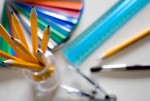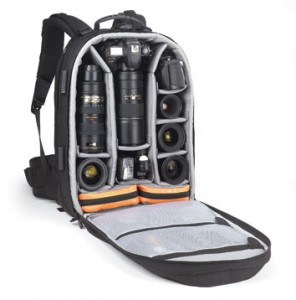Inspiration Requires Perspiration
Remember when special effects in movies were real? When the stunt man actually jumped onto a moving car? When characters ran around a luscious green jungle in South America, not in front of a flat green screen in a warehouse in Los Angeles? Computer technology has become integral to the creative workflow. It definitely has benefits; but the problem is that the “should we” has crept into “we can, so we will.” Many shallow stories are built around amazing effects, as opposed to engaging stories being supported by technology. In design, the “story” is communication and problem-solving. We need good reasons to use the techniques and graphics that we use in our designs. I’ve seen posts in forums from designers looking for great paper textures or certain free graphics. What about finding a real piece of paper, scanning it and creating your own texture? Or sketching a graphic element and importing it to the computer to create your own unique piece of art? Sometimes we need to get our hands dirty. In the end, it will give us a new appreciation of the work, and we will be proud of the result. It doesn’t always work out because of time or budget constraints, but make sure the decision is based on those and not laziness.
The Joy of Photography
Photographs tell stories of birth and death, love and war, freedom and oppression. They present the dynamics of life in the country and the city. They represent historic record, and they can shatter our definition of history. Photographs preserve our memories and inspire us to become aware. They reveal our dreams and our nightmares. They excite us and repel us. They clarify and mystify. The joy of photography lies in its infinite possibilities. Each photograph offers the extraordinary pleasure of discovery.Viewing, discussing, and creating images can be a passage to self-discovery that enhances self-esteem. Studying photography can be the conduit to a further understanding of various cultures and different ways of seeing, believing, and thinking. Photography broadens our conception of ourselves and the world.
Don’t be so dependent on your computer…
 The Role of Sketching in the Design Process
The Role of Sketching in the Design Process
Some of our young designers who have had easy access to technology throughout their academic careers, are quick to immediately take their design ideas to Illustrator or Photoshop. But is this the most efficient way of designing?
We think… “not”.
In today’s rather impatient society, the word “fast” has been woven into our very fiber. Fast, food, fast checkout, etc.. To achieve great design, there are no shortcuts.
As a tool or skill, sketching must continue to have its role in the design process. That role will vary depending on the end-product being created, the size and scope of the project, the individual designer’s style, experience, and workflow, and the client’s expectations.
The role of sketching in digital art varies depending on if your creating Web sites, identities, illustrations, product concepts, or other designs. An illustration or a logo is likely to need more sketching than a website.
A large project with a significant client budget will benefit from sketching throughout the design process. This makes sure that before massive amounts of time are invested on refining a solution, a direction is first agreed upon with the client. Sketching can start loose, beginning with basic concepts. Then work on compositions or layouts. After those directions are chosen, the concepts can further be refined with detailed sketching.
So for your next design project, before reaching for Photoshop or Illustrator, take out your sketchpad. We are confident that this approach will ultimately make you more organized, more efficient, less stressed, and ultimately lead you to producing great designs!
Great Design is History
Design began like any craft: people practiced it, studied it and challenged themselves. While modern design tools and resources certainly make our many tasks easier, they don’t always improve our work. Tools and shortcuts are temporary. Great design is timeless. The best tool available is sitting in our heads; we just need to upgrade it once in a while. Training and experience leads to solid solutions and happy clients who demand our expertise.
